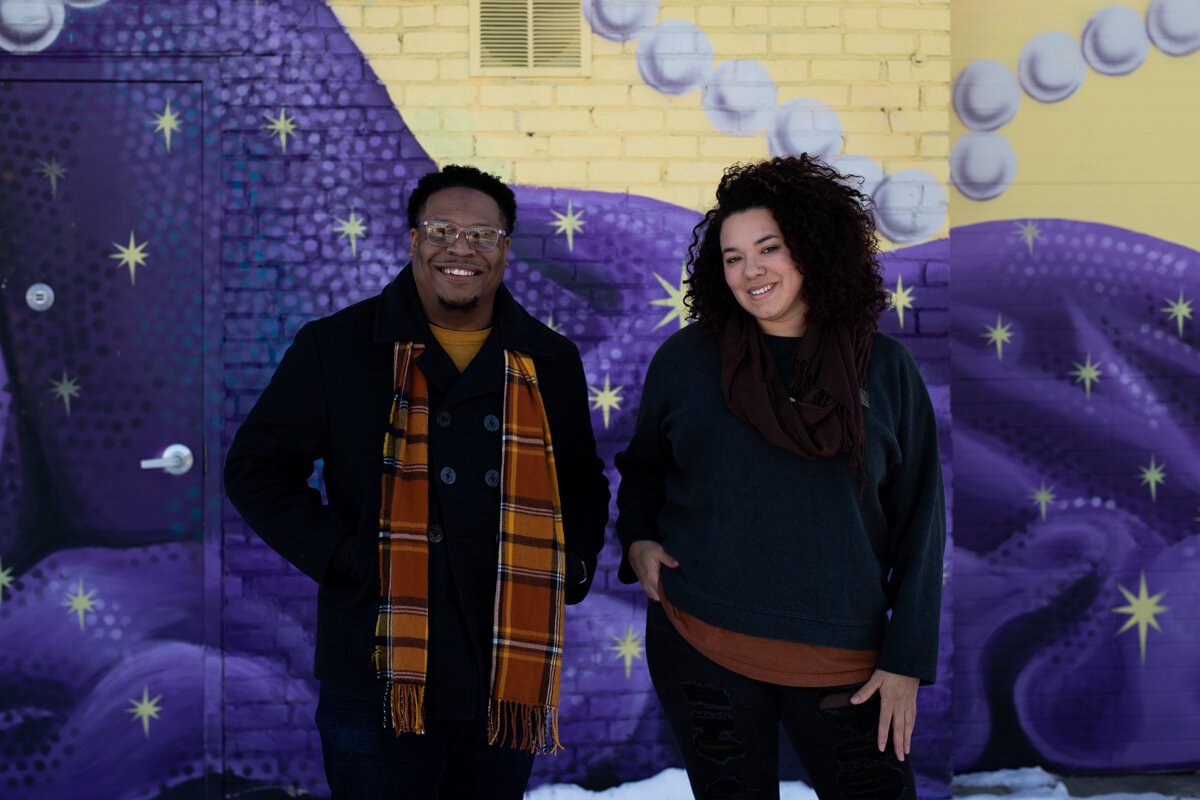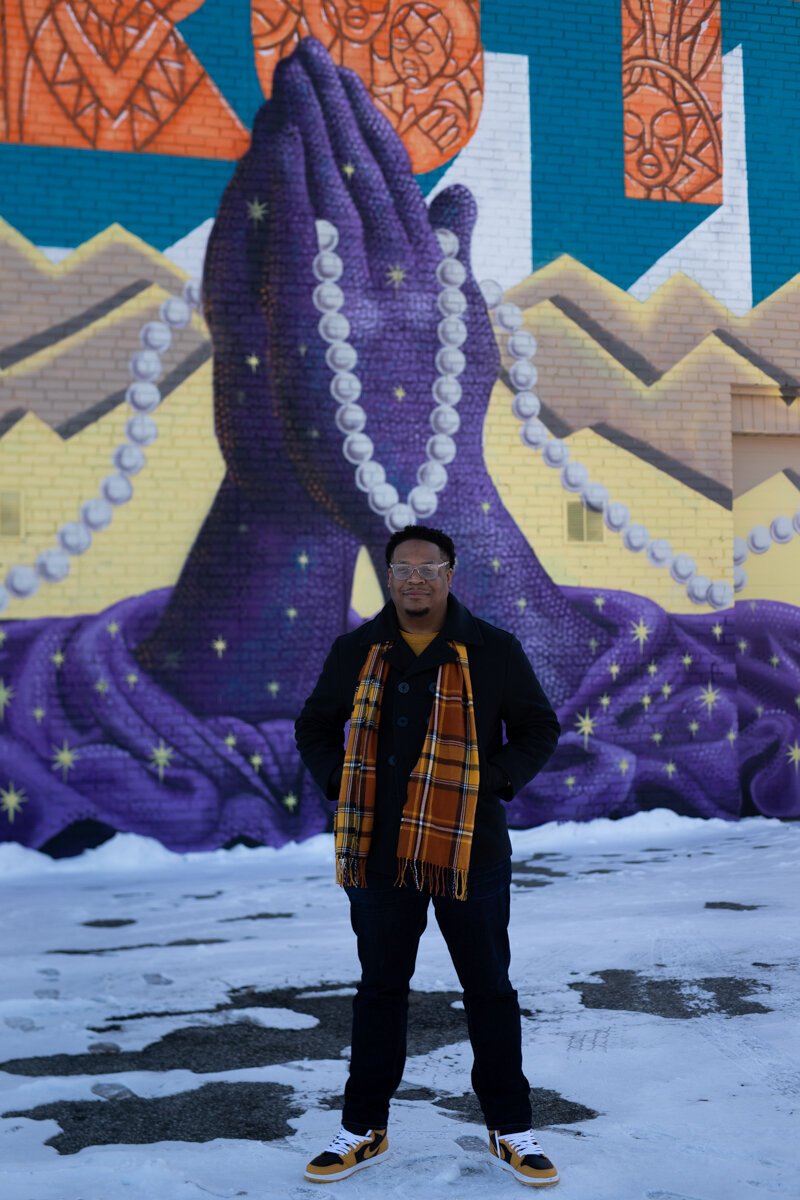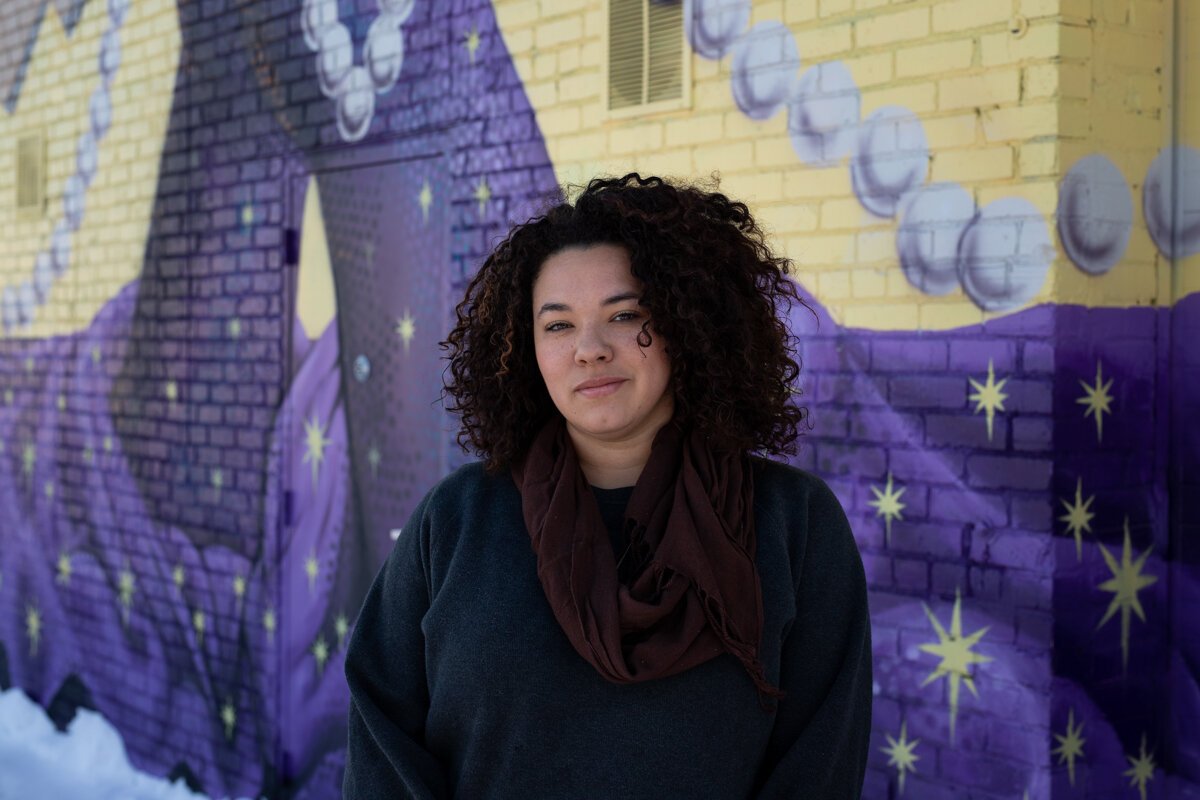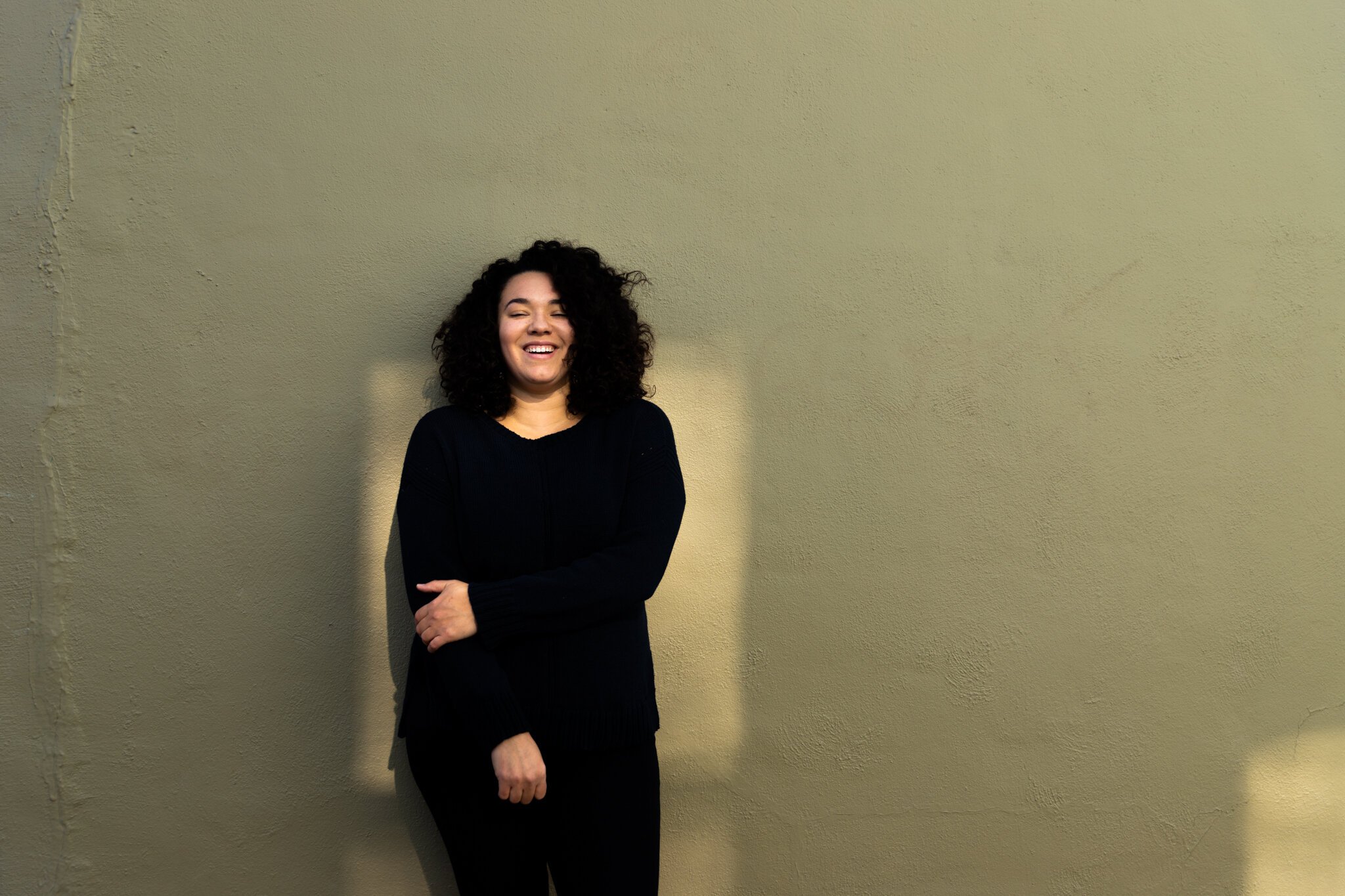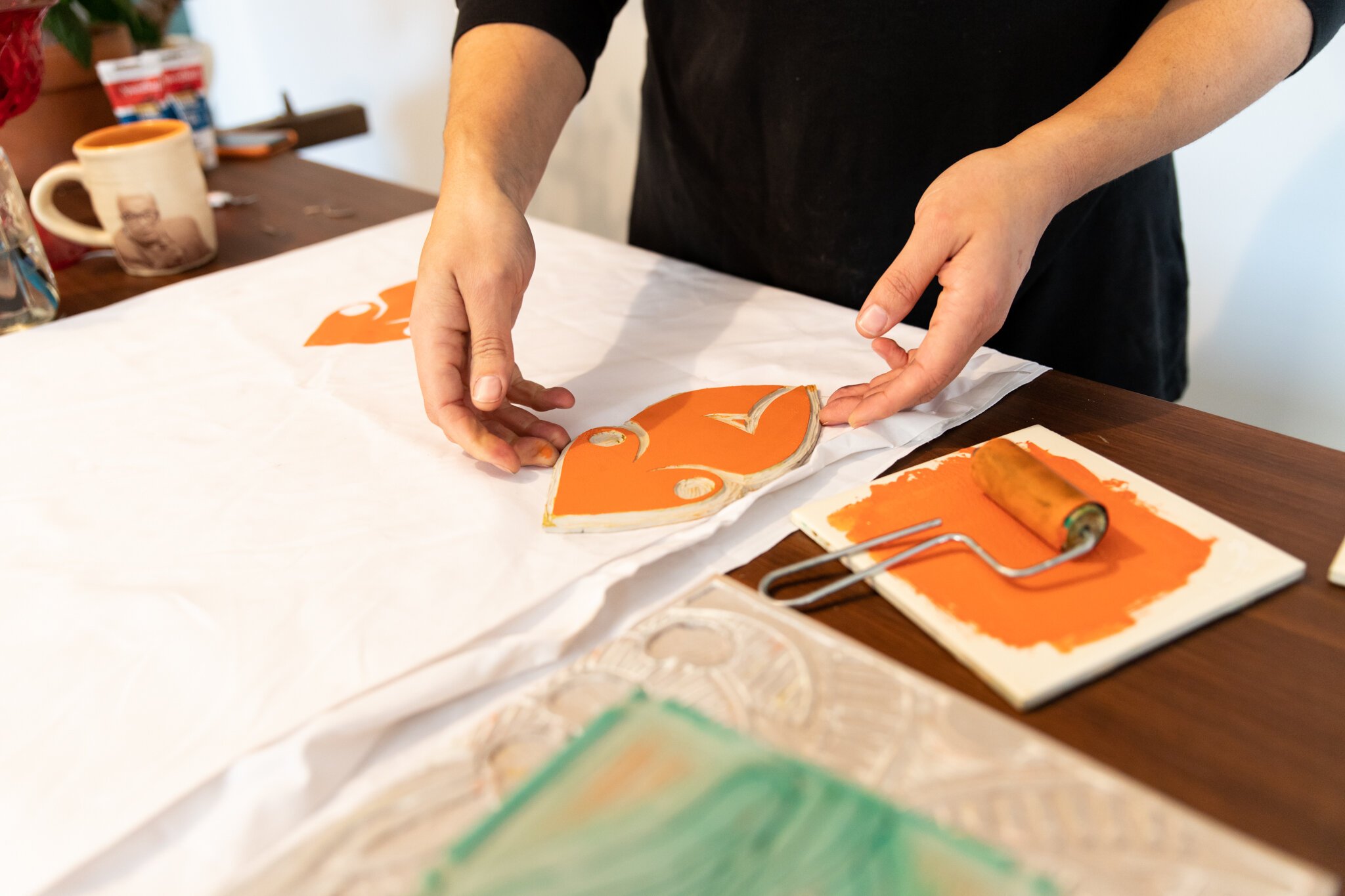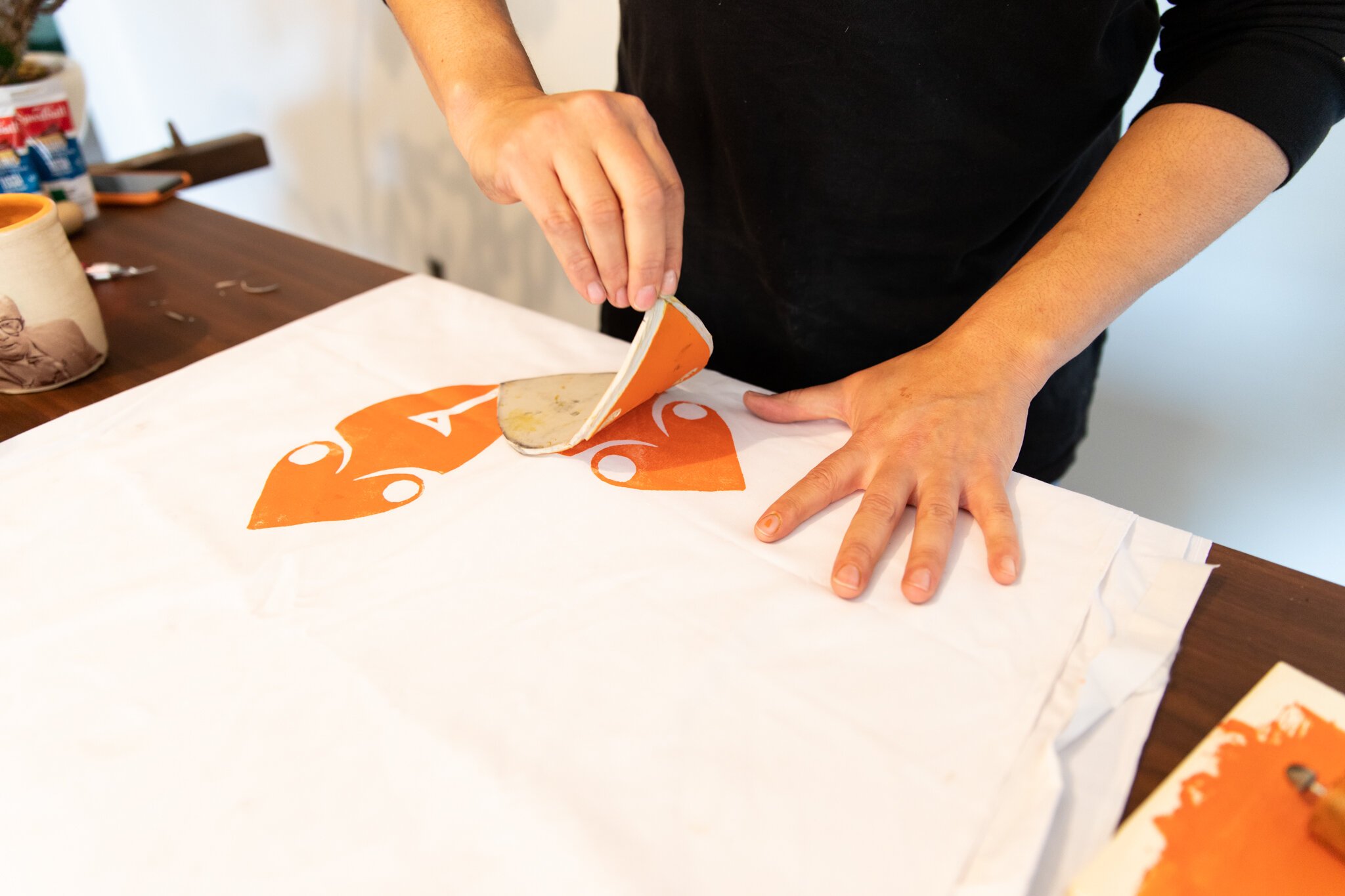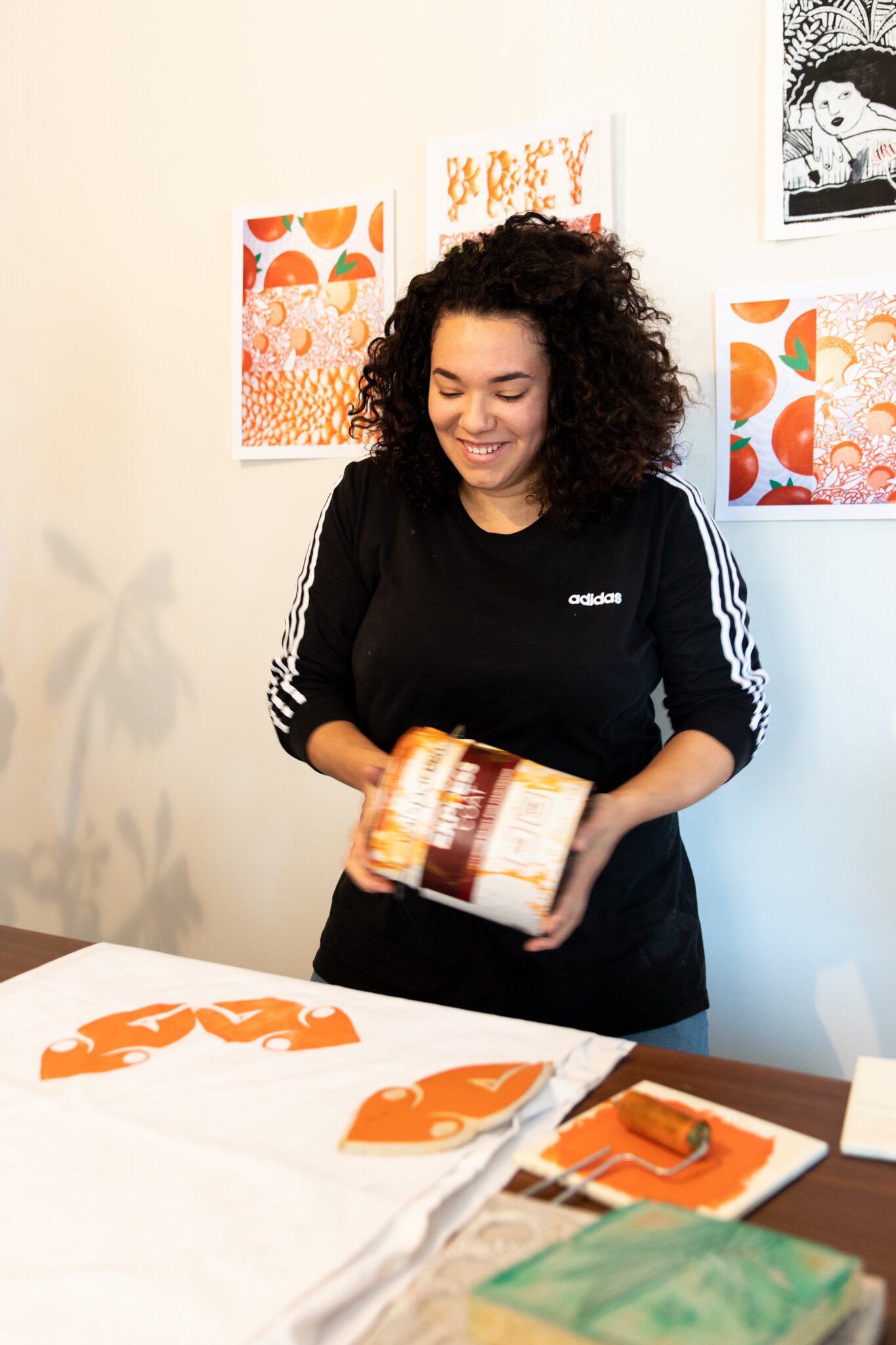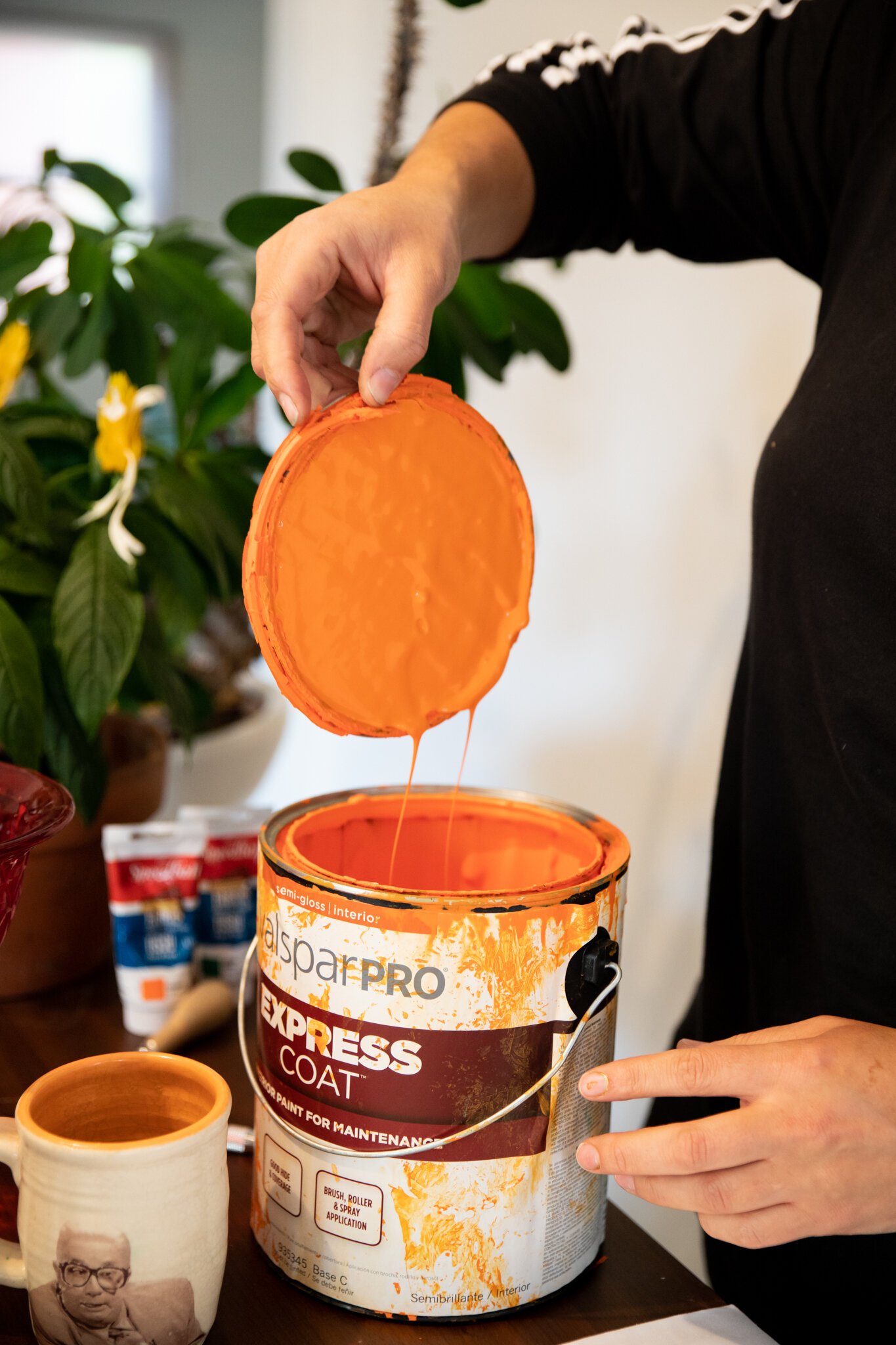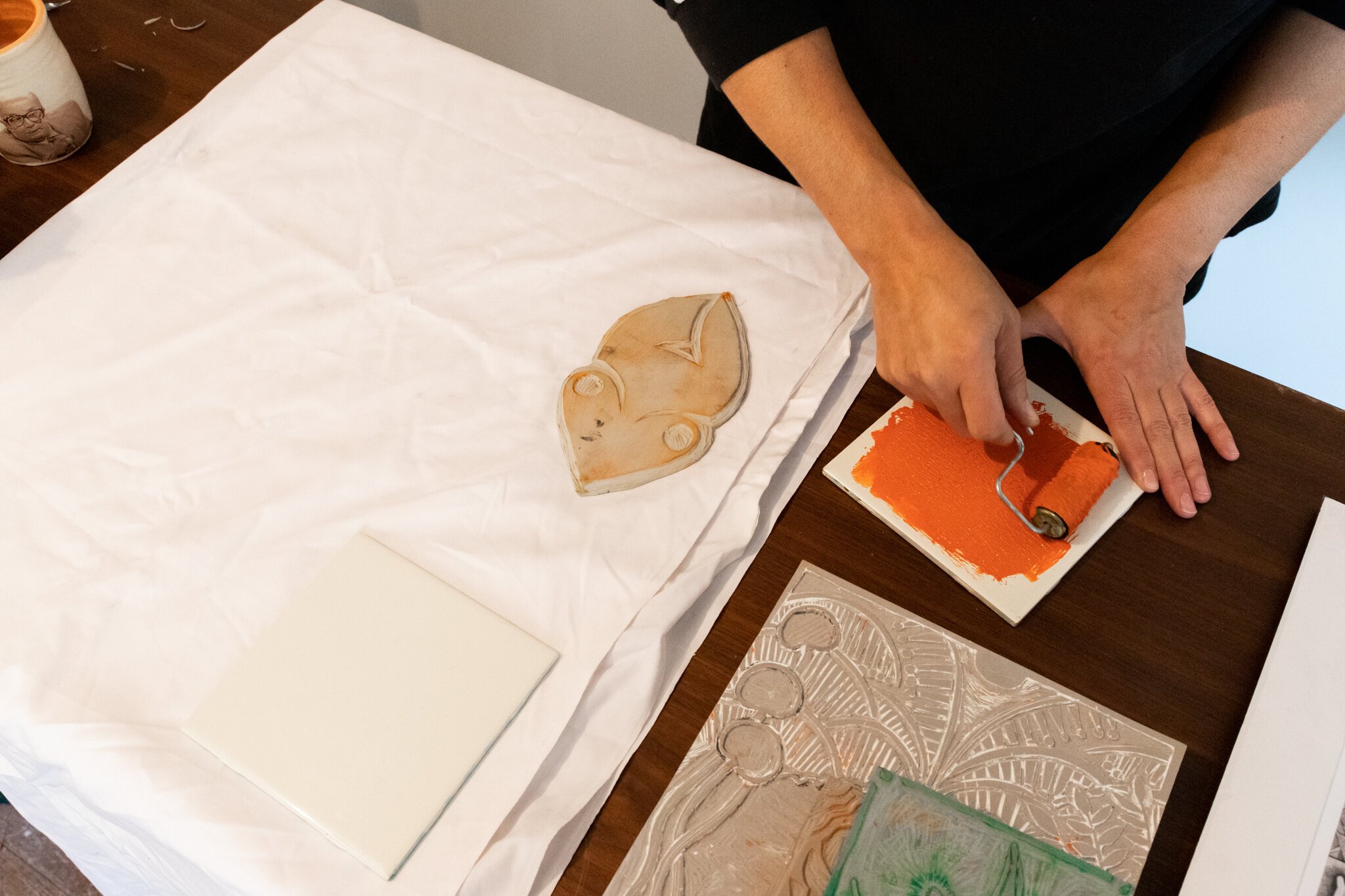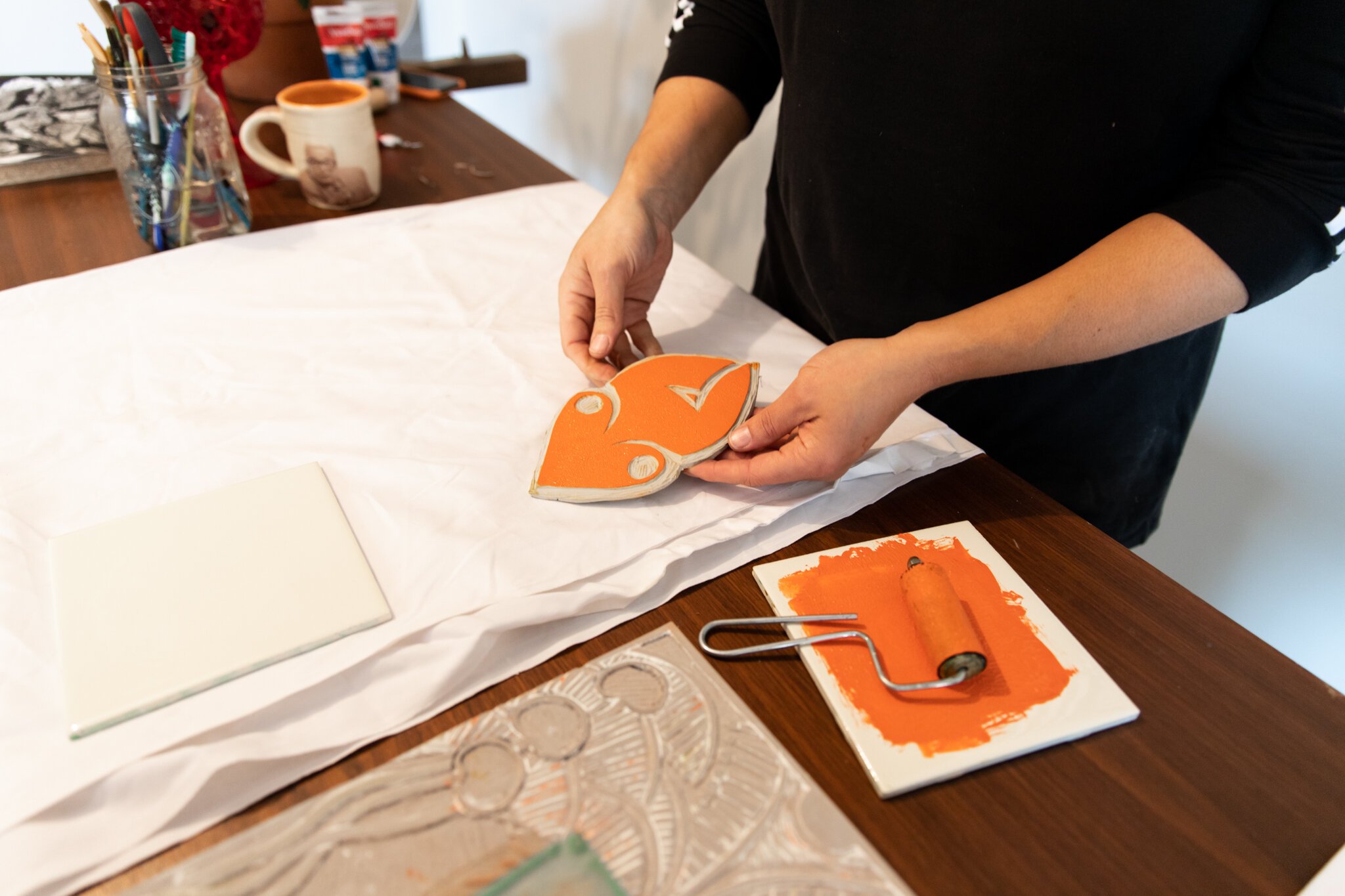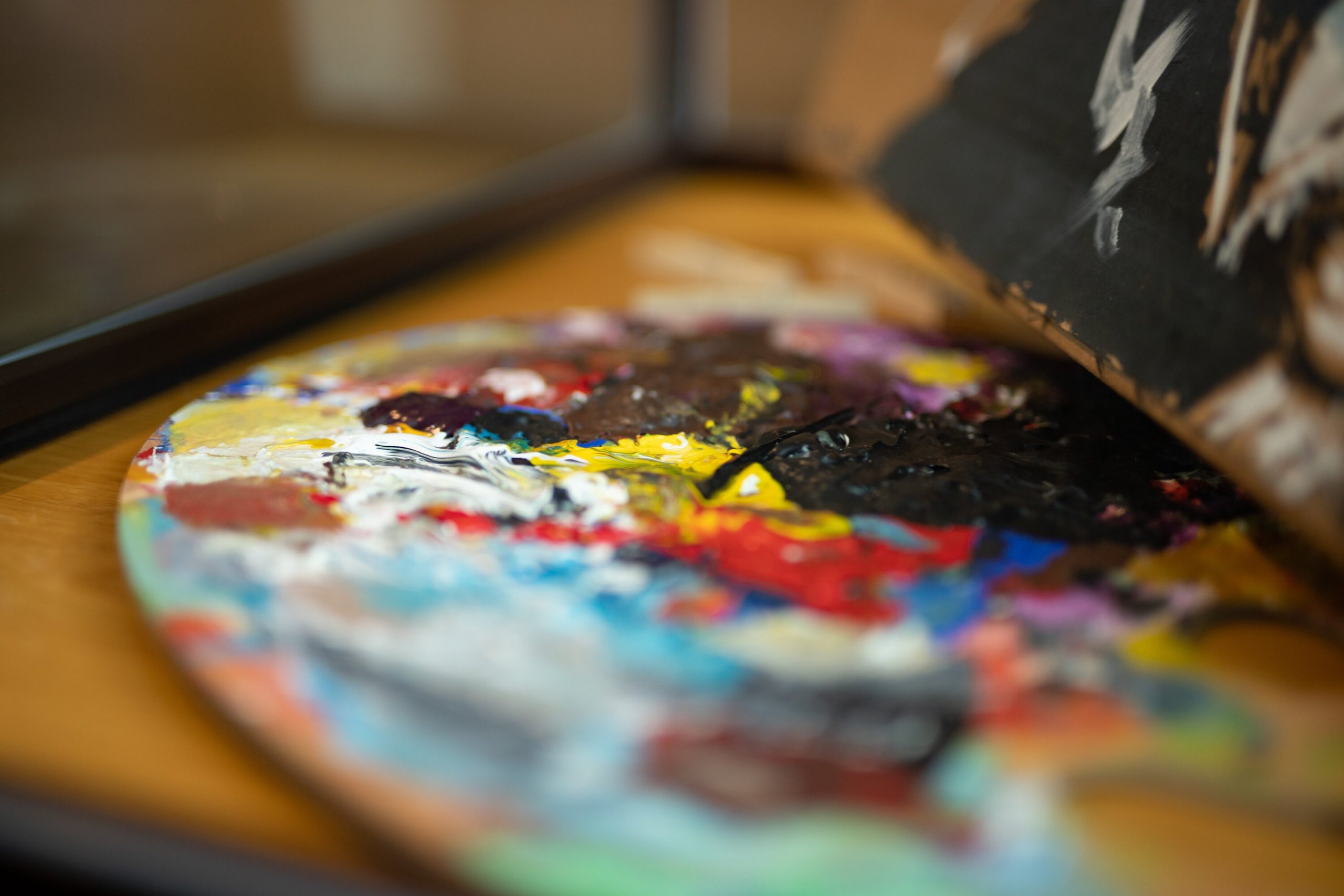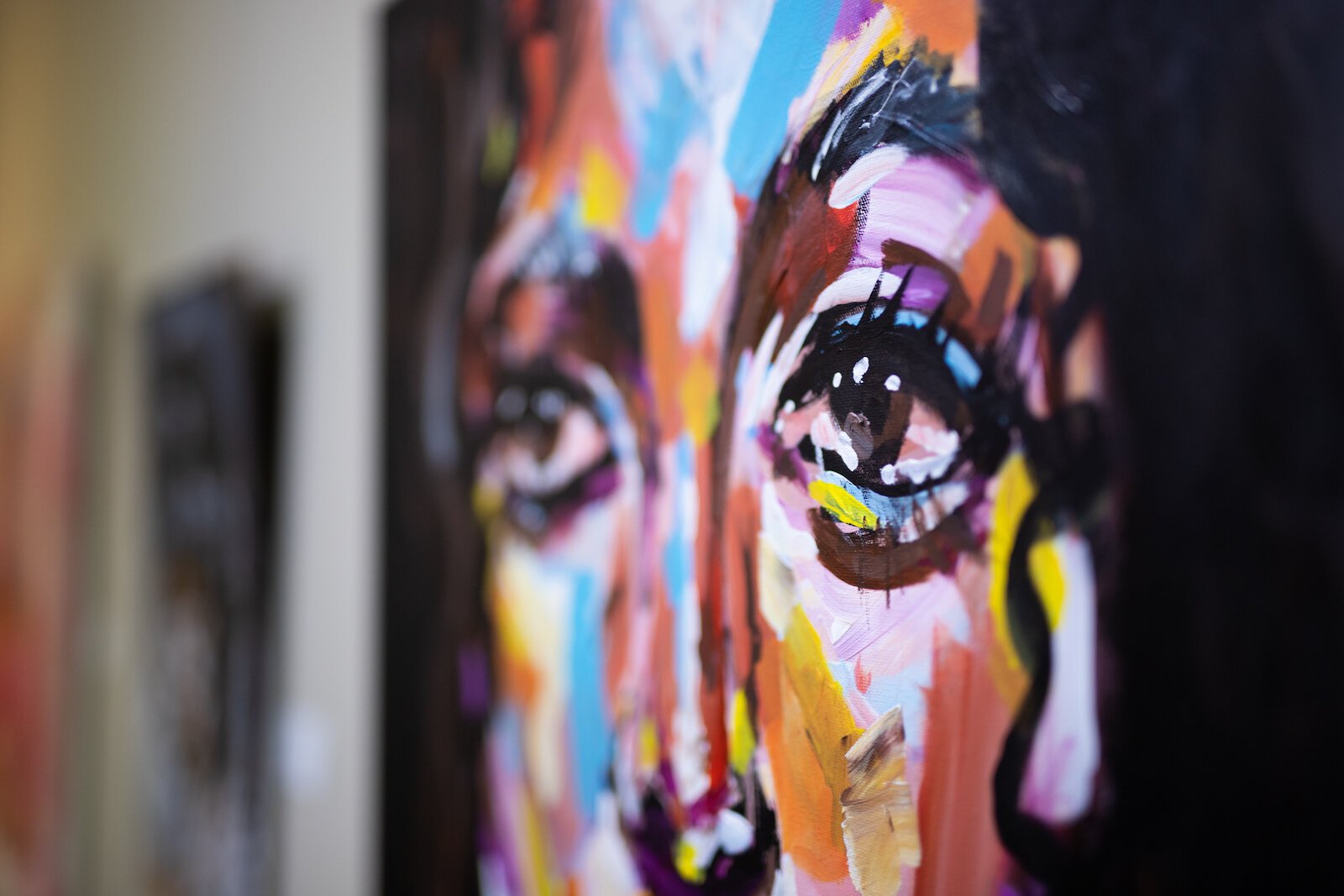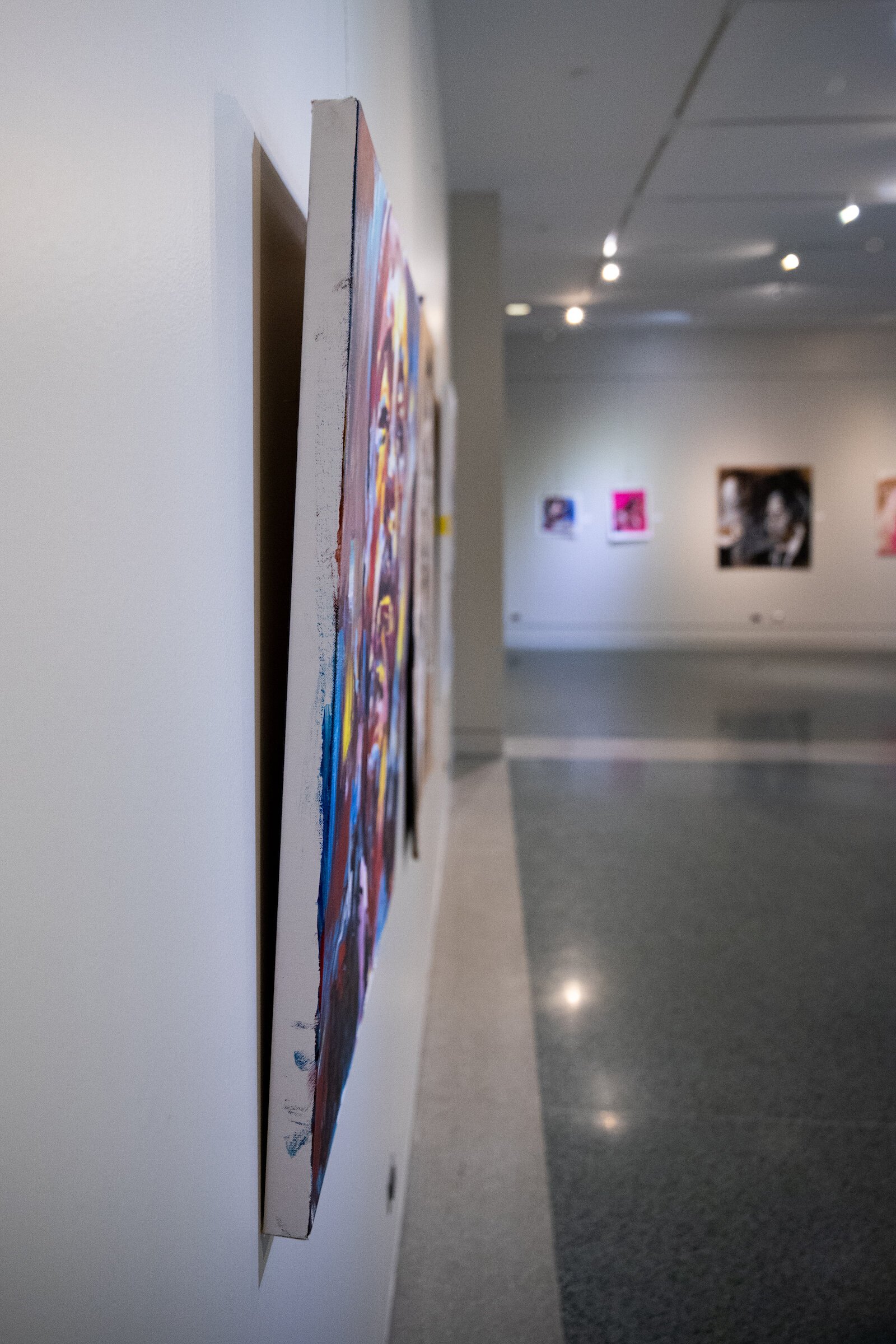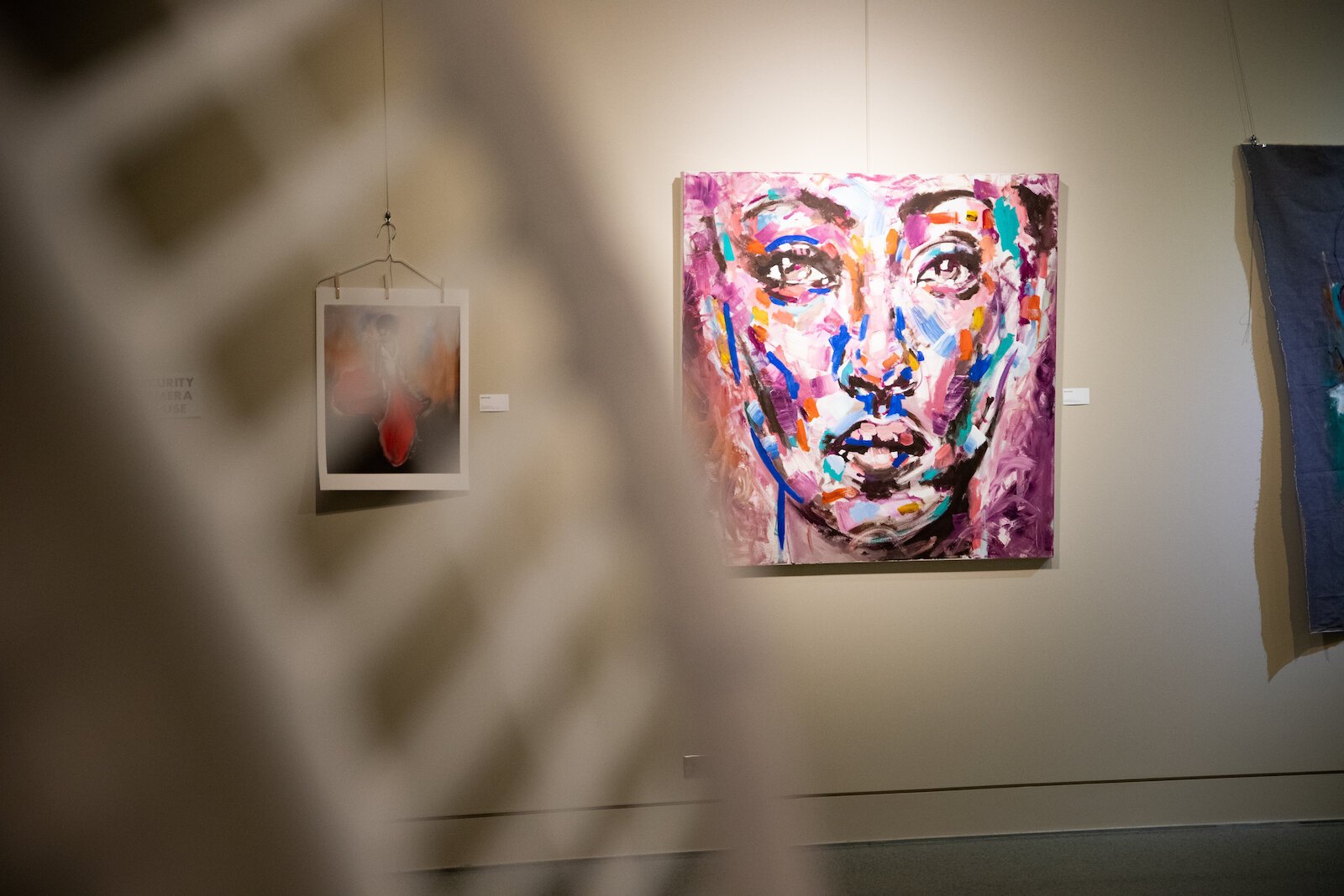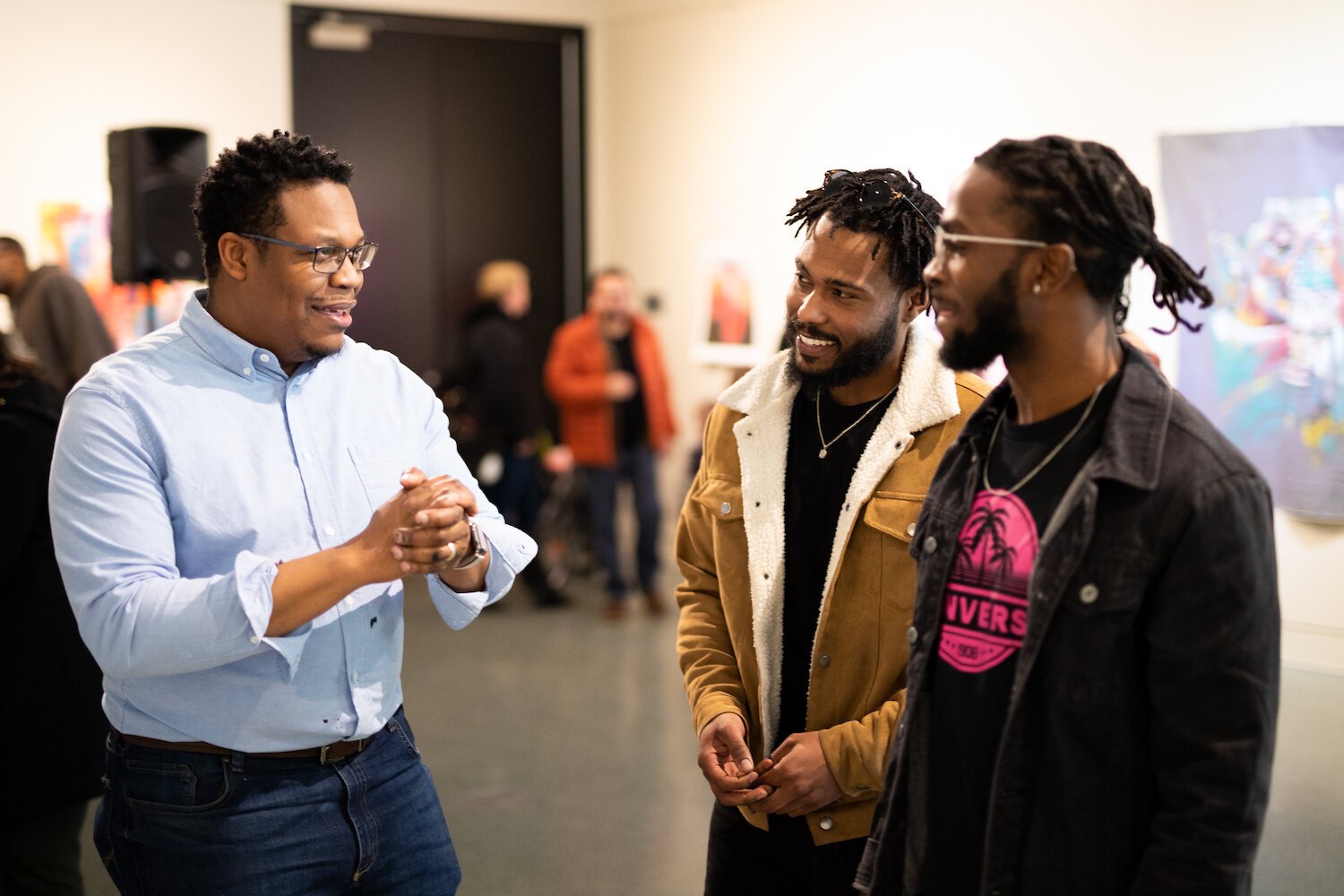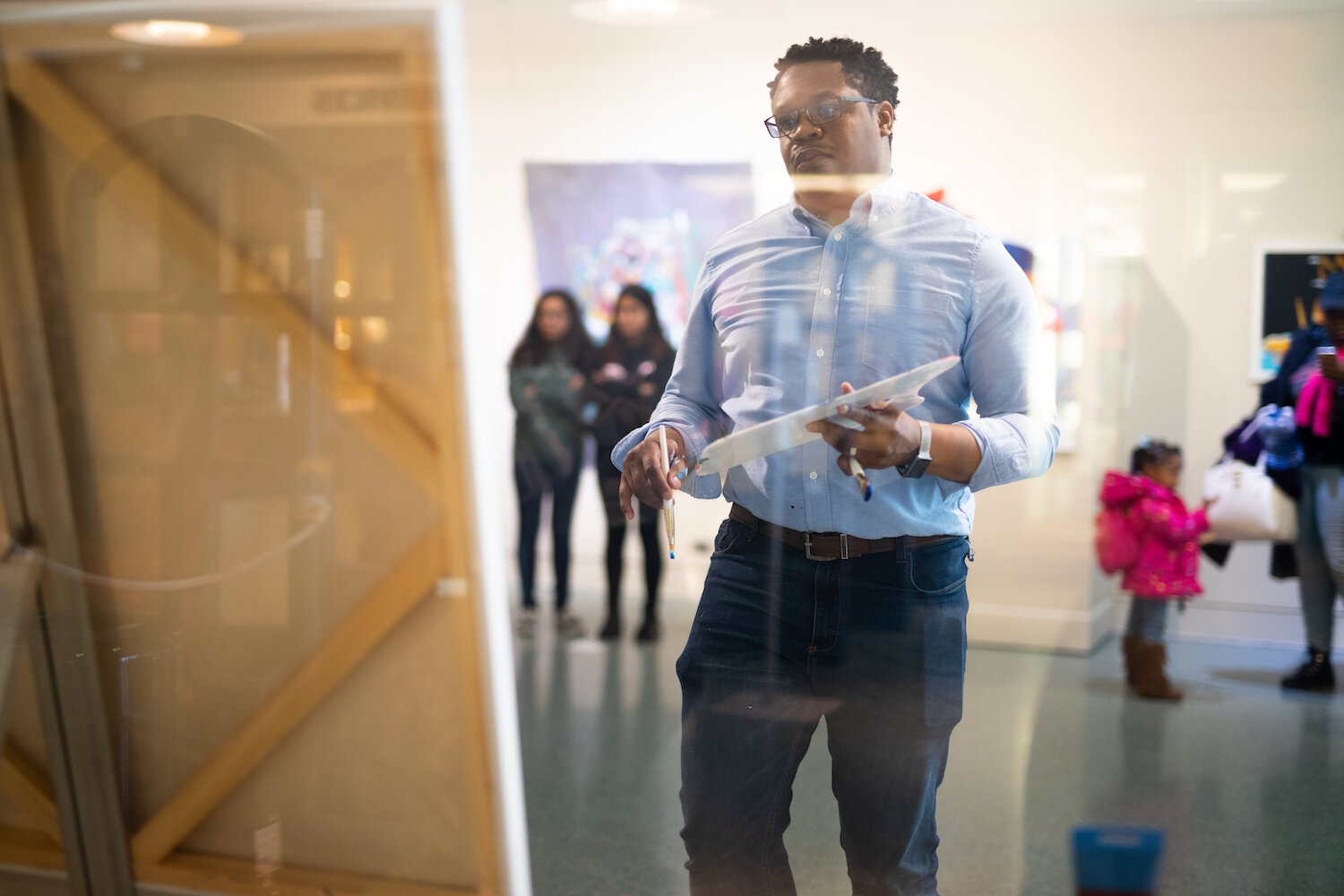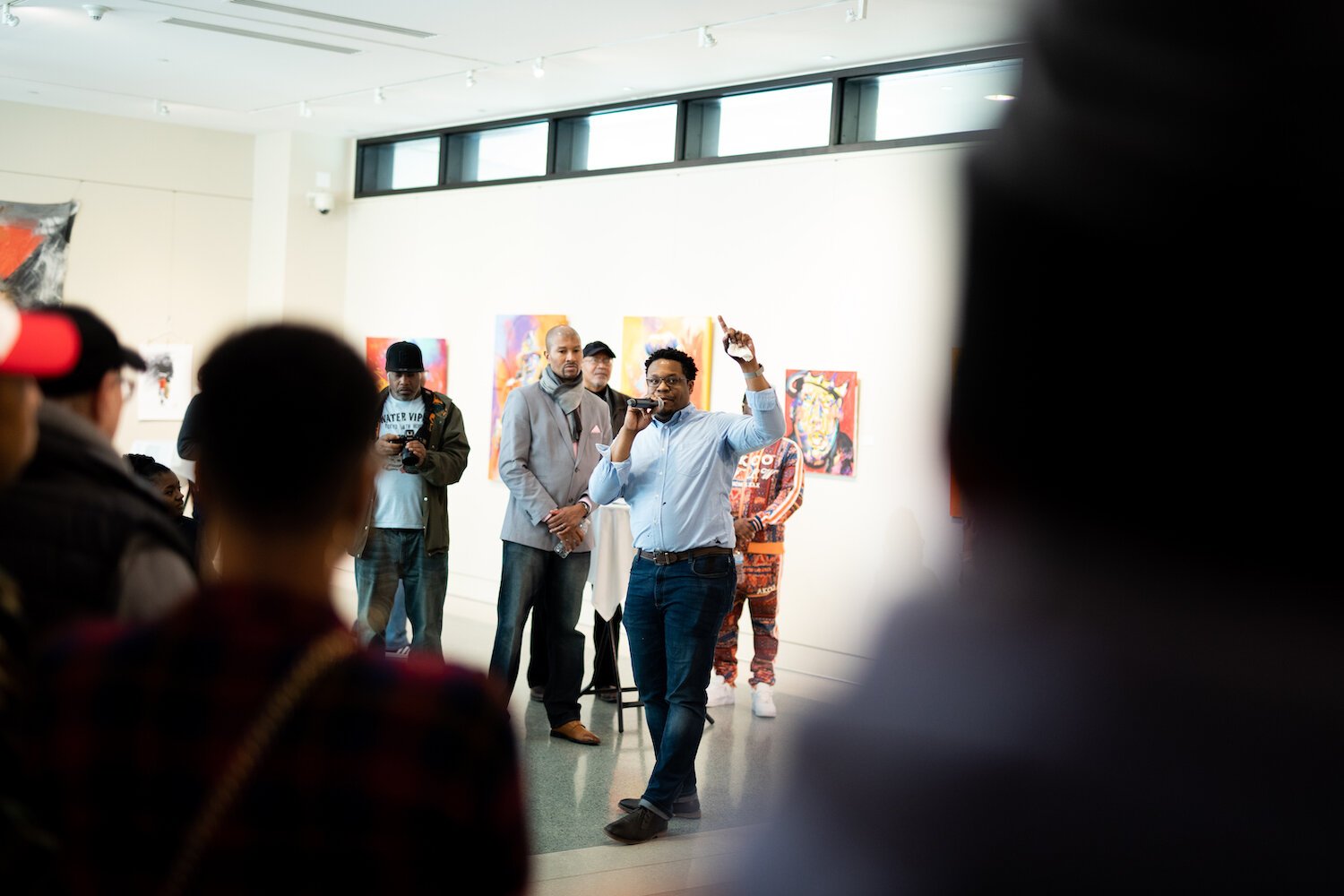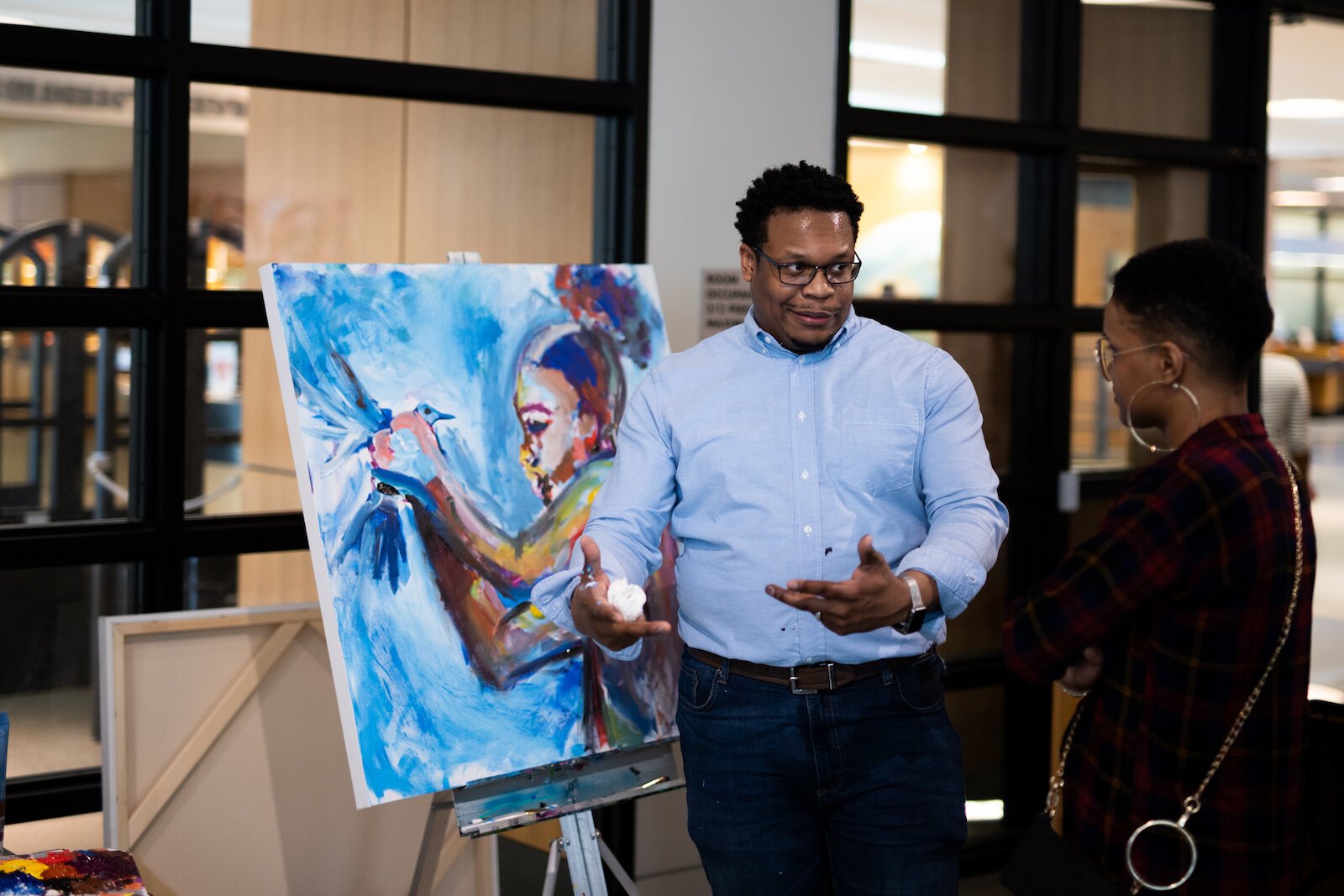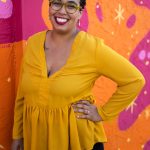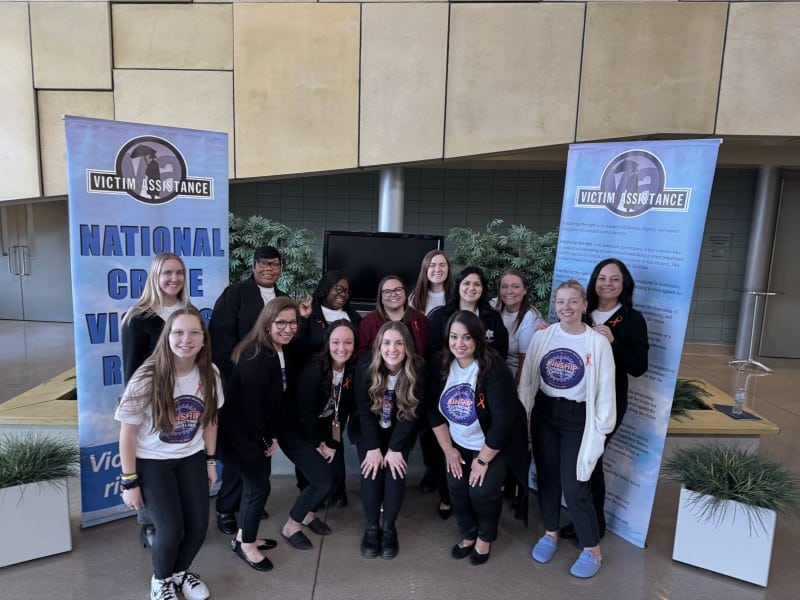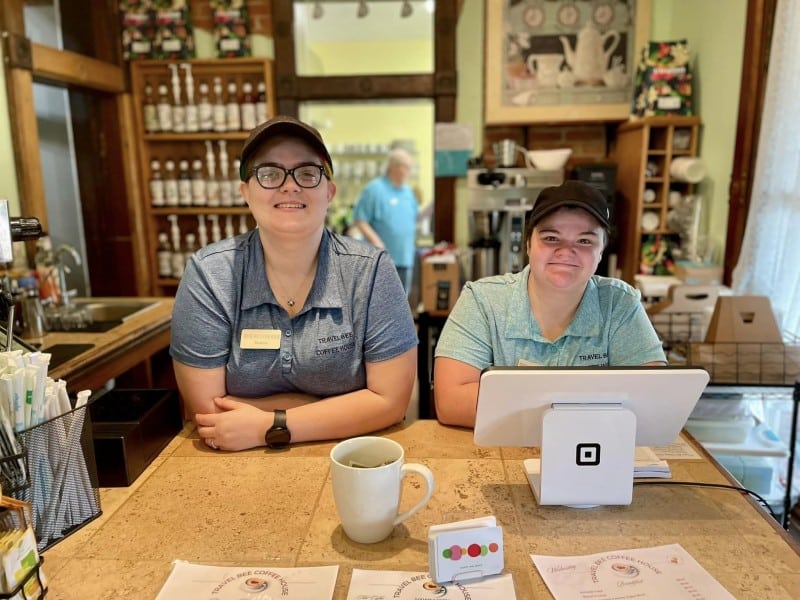How does your racial identity manifest in your art? Fort Wayne creatives weigh in
In honor of Black History Month (and Black History being made every month), three Fort Wayne artists tell us about their creative journeys, who inspires them, and what’s next.
In honor of Black History Month (and Black History being made every month), we ask three Fort Wayne artists to share how their racial identity manifests in their art, who inspires them, and what’s next.
Ron Lewis

IFW: Tell us about your path to becoming an artist.
RL: My mother was an artist when she was younger. During marriage, she had 12 children; three of which gravitated to the field of art and design. So, you could say that I was granted the gift. She later encouraged us further by supplying tools and space to create. As I grew into my understanding of the field, I’d begin encountering mentors in the community such as Willie Jordan, Al Jacquay, Kip Bailey, Galen Bailey, Dennis Krist, Ellis McCracken and the likes.
IFW: How does your personal identity manifest in your art?
RL: When I was young, I always found that being referred to as a “Black artist” carried negative undertones; almost as if it were necessary to include comparisons. “This particular person here is an artist, and this one, well, he’s a Black artist!”
My experience as an artist comes from what my community and my ancestors have shown me: thick lips, kinky hair, etc. For me, this experience molded my creative output and unapologetically shaped the way that I would approach my execution of images. I am a product of my rich heritage.
I was once involved in an animation group where I was given the role of “character designer.” I was given the specs on the character to design, but was never informed on a specific race of the character. So, naturally, the character was designed to have dark skin.
When I presented my designs, the group was concerned and asked, “Why does the character have to be Black?” I replied, “You never specified the race in your description!” I altered the character and left the group. I was the only Person of Color in the group and the presumptive nature of the group let me know that they naturally assumed that the character should look like them by default, and not me.
So, I design from my perspective in the world. I’ve never seen myself as a Black artist, but one who was shaped by the world in which he was raised. So, to answer, one should be clear in specifying what they want from me unless I am afforded creative liberties.
IFW: Who are some of your favorite Black artists here in Fort Wayne?
RL: Willie Jordan is my first and most effective mentor. He set everything in play for me. I met him when I was a seventh grader at Geyer Middle School. I met him in a time when, as an artist, I felt alone in the world. While my parents supported me and my creativity, this man showed me a universe of people who looked like me thriving in the field they loved. It was a strong influence, and I needed that at 13-years-old.
My influencers are James Redmond (photographer), Kip Bailey (visual artist/muralist), Galen Bailey (illustrator), DJ Eclyps (photographer), Ellis McCracken (artist), Michael Johnson (painter/visual artist), Theo Smith (painter/illustrator), and the like. These people energize me. They made me appreciate the field I’ve chosen.
Now, that being said, until I was a freshman in college, I’d never seen a Black woman executing art. I know I just mentioned that being referred to as Black artist rubbed me the wrong way. I can imagine being called a female artist would do the same for them. I met a woman in my freshman year named Marie Brown, and she was a fantastic artist. She was like a unicorn. Then I met Teresa Yarborough. A hidden, but not so hidden, gem in our community. I had the pleasure of painting murals with her in the summer of 2021, and I felt as though I’d been taken back to art school. I learned so much from her.
I would be remiss in not mentioning Lyndy Bazile. Lyndy was a former student of mine, BUT she’d already been well trained before I met her. Lyndy has grown so much. She empowers me.
I was dumbfounded for not recognizing that women artists (and forgetting that my early influencers were my mother and sister) were all around me. It completed a circle for me; one that made me grow as an artist in a rich community of creatives.
IFW: What can Fort Wayne do to support and lift the voices of its Black artists?
RL: I, personally, do not believe it is the job of Fort Wayne to extend opportunities to the so-called Black creative community.
One of the greatest stories of achievement came when my friend, DJ EClyps, was recognized nationally for his photography in TIME magazine during the summer of 2020. His work spread over social media and allowed the world to see his style and his work.
The art community in our town wants to reach out and find gems from the outside of our community. I feel it is more impressive that we are able to find these people right here in our own communities. There are more things on the horizon coming from our own community. I just want the city not to be shortsighted in realizing that good things are already here. It just has to work harder to recognize it.
In that same vein of thought, Black people need to not rely solely on someone to promote them (unless they are willing to hire an agent). We have to be our biggest cheerleaders and take charge of how our work is viewed.
Don’t be afraid of rejection; it’s part of leveling up. If you’ve never been rejected, you’ll always believe there is no need to grow.
IFW: What can we expect to see from you in 2022?
RL: In June 2021, I successfully launched DVO Prime Animation and VFX LLC. Our purpose and goal is to develop television content for streaming services and feature films.
We have our flagship show in the works now and should begin pushing announcements in April 2022. We are very excited to work alongside dedicated artists and animators from our very own community to bring about this important and fantastic story.
DVO Prime is also a music production house. We are writing music for recording artists and ad agencies looking for jingles. Be prepared!
Lyndy Bazile

IFW: Tell us about your road to becoming an artist.
LB: I’m not sure what came first; people telling me I was good at drawing or my experience of loving to draw. I remember that I won a FAME Arts Award, and I was nominated “Best Artist” in my senior yearbook. That was really important for me. I never felt like I fit in at school; I never felt like I was socially acceptable in many ways, but realizing that all my peers voted for me as “Best Artist” meant I didn’t have to fit in; I could be an artist!
I struggled with feeling generally insecure, and that held me back from exploring my art further as a young adult. In my 20s, I created my own opportunity to work with some legendary comedians. I moved to the East Coast and taught myself to animate and produce, and worked really hard to overcome a lot of personal insecurities. When I moved back to Fort Wayne, I felt like I was able to call myself an animator! I fell in love and became a mother. In 2018, I struggled deeply with heartbreak and the loss of my second pregnancy, and so I focused on creating my art practice for comfort. I’ve been growing in this comfortable space for about two years now!
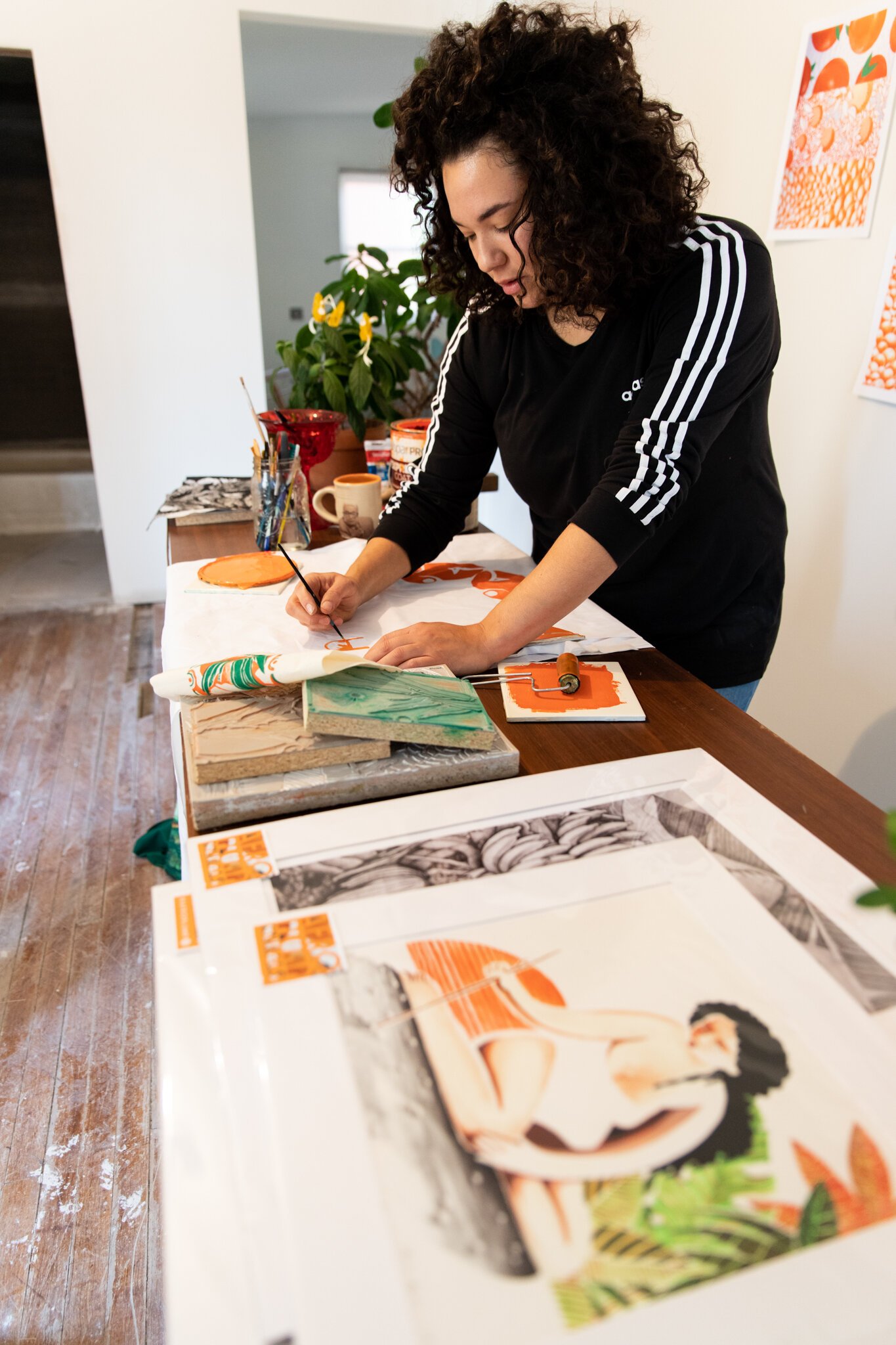
IFW: How does your racial identity manifest in your art?
LB: My current art practice is still very much inspired by the loss of my second child. I was creating my first paintings in 2019, so I could feel close and share love with Rosa Joy. My two children are a mix of the Indigenous people of Southern Mexico, European, West African, and possibly some Taino Native by way of Haiti (Ayiti Cheri). The loss of that little person, my own experiences in being Mixed, plus the racial awareness that was bubbling up around me at that time must have left me with a need to see the faces of the women I descend from.
For better or worse, I’m moving very slowly as an artist; I can’t just draw anything! However, I think that my perspective is shifting slightly forward to include more of what a fair and safe future might look like. We are learning to think less linearly; therefore, I don’t choose the past or present or future. My work is trying to look at as much “time” as I can in one imaginary composition while also being intentional about my feelings on race and how we can all find healing. Yes, even those of us who “don’t see race” and don’t realize that healing is needed.

IFW: Who are some of your favorite Black artists in Fort Wayne?
LB: Ketu Oladwa is one of the most powerfully creative minds I know of. He also offers great inspiration and support to many other Black artists in his community, which makes him a favorite of mine. Theopolis Smith is making beautiful work and reminds me daily how important it is to be innovative and forward thinking. Teresa Vasquez creates work that explores the power of dreams and intention, which is extremely exciting to me. I have loved working with and learning from Ron Lewis and Teresa Yarbough. Jaliyah Rice blows my mind with her talent, and it’s very important that she continues to create.
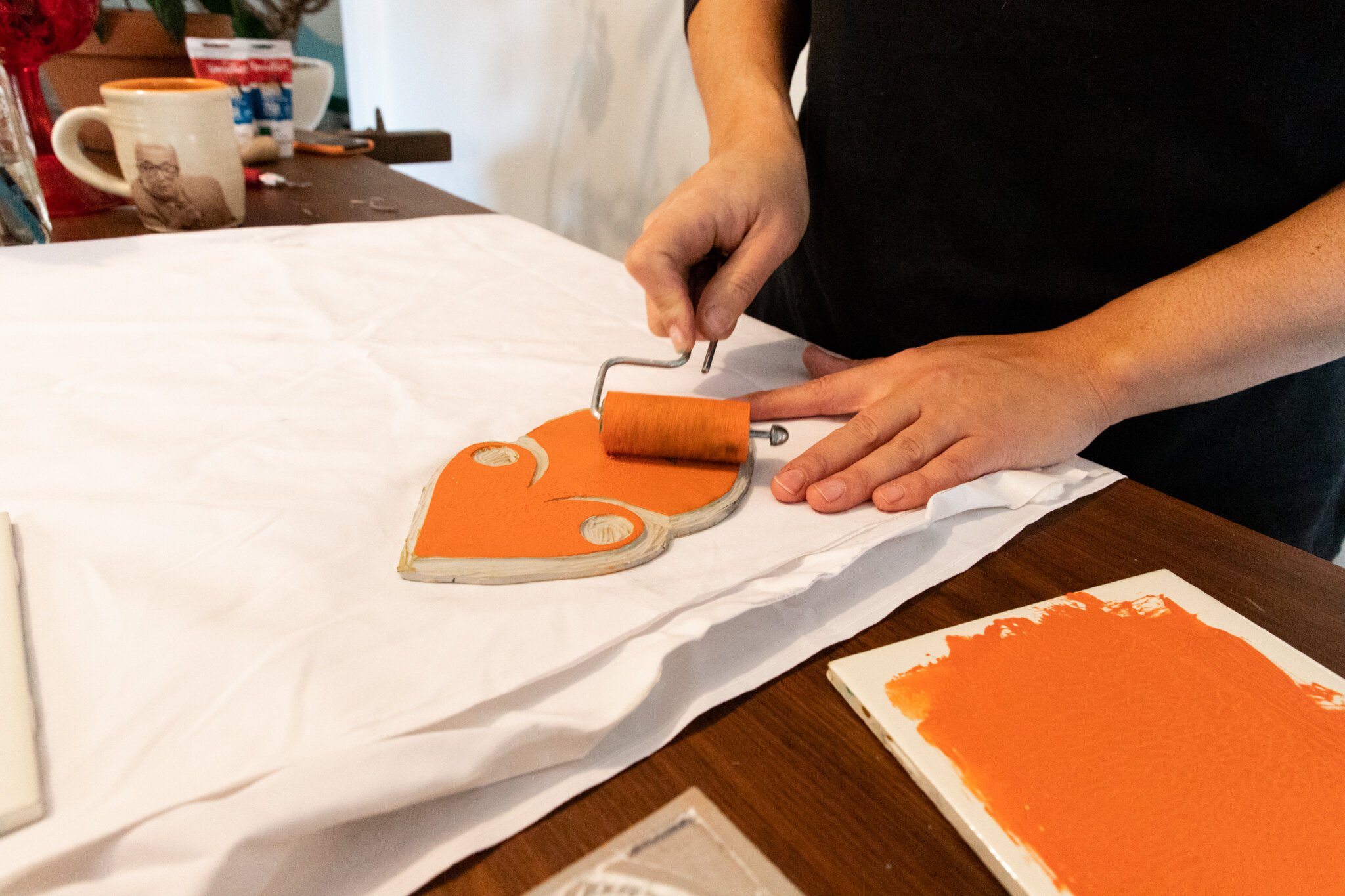
IFW: What can Fort Wayne do to make sure the art scene is diverse and inclusive?
LB: Fort Wayne can support BIPOC artists who are looking for equitable ways to share space by reaching out to engage and ask what is needed. Don’t only reach to the easily accessible artists; always try to go a step further to find someone who maybe you never heard of before, but is obviously working to create art and get involved. Reach out to them, and offer them a truly wonderful, career growth opportunity!
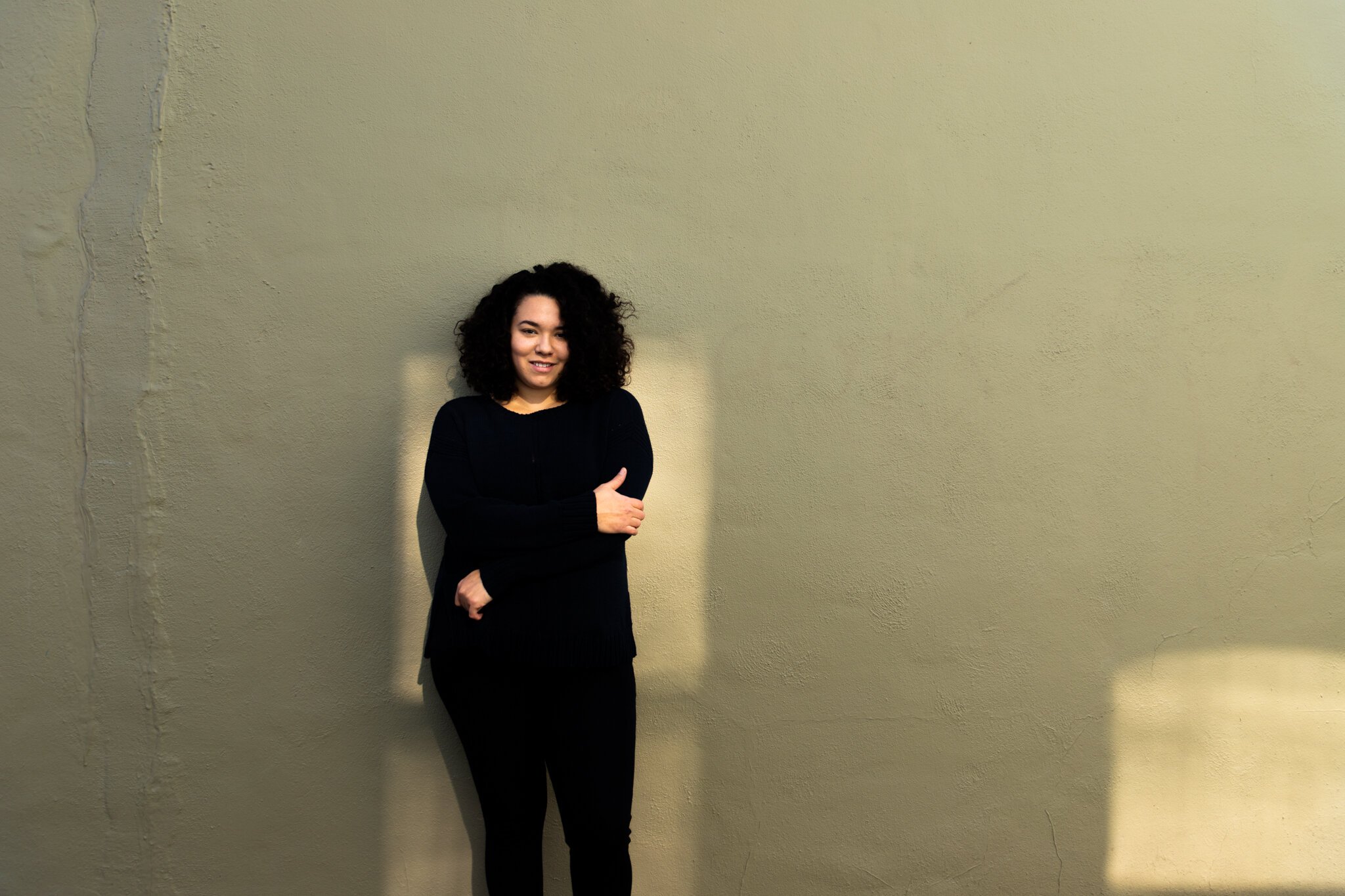
IFW: What can we expect to see from you in 2022?
LB: I started off this year with two big projects, so maybe I’m allowed to be done already! I did the 2022 Art Awards for Arts United and had so much fun. I also installed a mural at Cinema Center that required me to learn several new skill sets, including lite carpentry. You can also expect to see me moving into a larger studio space that allows for more community engagement. You’ll see some workshops coming up in March and April, a couple public art projects, some gallery shows, a new figure drawing group, and a heavy focus on lifting up my fellow creatives in the BIPOC community.
Follow AfroPlump on her website, Instagram, and Facebook.
Theopolis Smith III
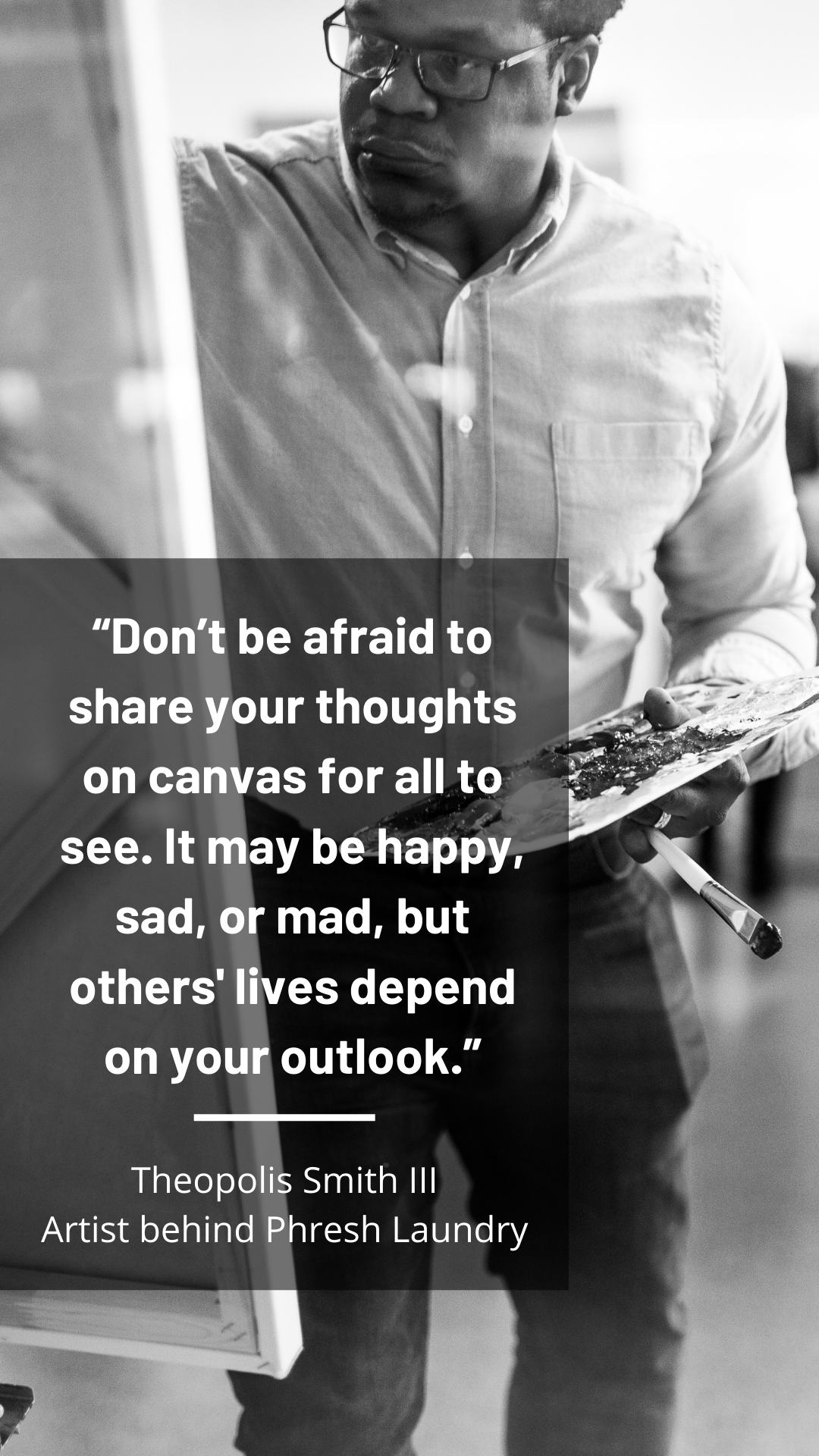
IFW: How does your identity manifest in your art?
TS: I’m able to take every aspect of who I was in childhood, to who I am now in adulthood, from a single bachelor, to a married family man, from being faith-driven, and living the Black experience allows me to manifest a cornucopia of ideas, witty thoughts, and sound visuals.
IFW: Many of your pieces over the past couple of years have reflected on social issues the Black community have and are currently facing. What types of feedback have you gotten on these? Can we expect to see more of that from you?
TS: Thankfully, the feedback has been good. I make sure what I have to say socially is well thought out, tasteful, and teachable. There will always be more coming from me.

IFW: Who are some of your favorite Black artists in Fort Wayne?
TS: I’m a fan of Michael Johnson, DJ E-Clyps, Mark Braster, AfroPlump, Sierah Barnhart, William Smith, Andre Portee, and a host of others. It’s actually a lot!

IFW: What’s one piece of advice would you give to an aspiring artist?
TS: Find your voice and style. Don’t be afraid to share your thoughts on canvas for all to see. It may be happy, sad, or mad, but others’ lives depend on your outlook.

IFW: What’s it like being a full-time artist in Fort Wayne?
TS: It’s been a shift from corporate life. I had to relearn what it looks like to “go to work” when work now is something I love. Learning order and a routine was my obstacle. Now, I’m in a groove of when to paint, when to be an entrepreneur and marketer, and how to switch gears back to being a family man.
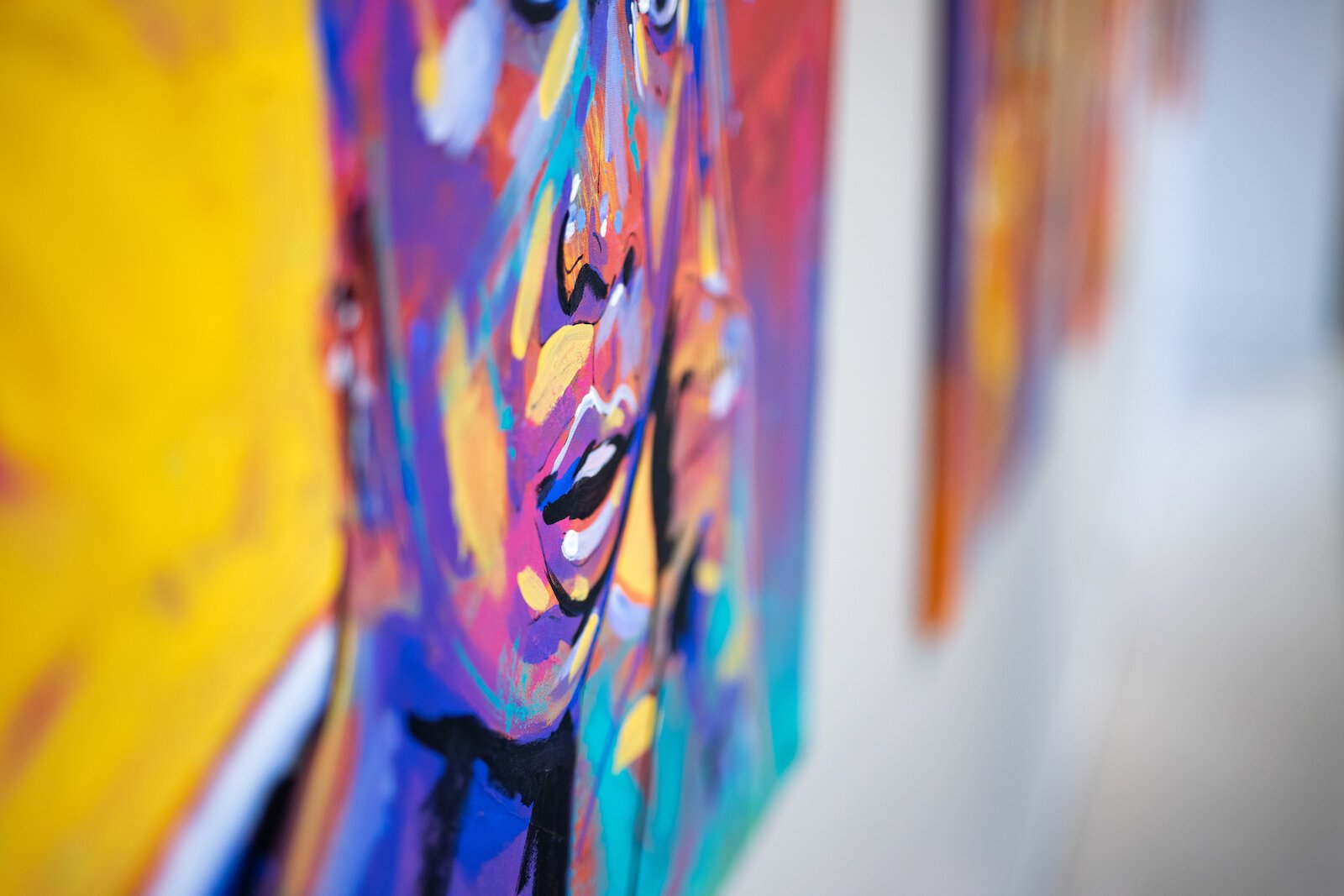
IFW: What’s up next for Phresh Laundry?
TS: I plan to share more art, create new experiences with partners, and have a metaverse presence among others.
Follow Phresh Laundry on his website, Facebook, Instagram, and Twitter.

